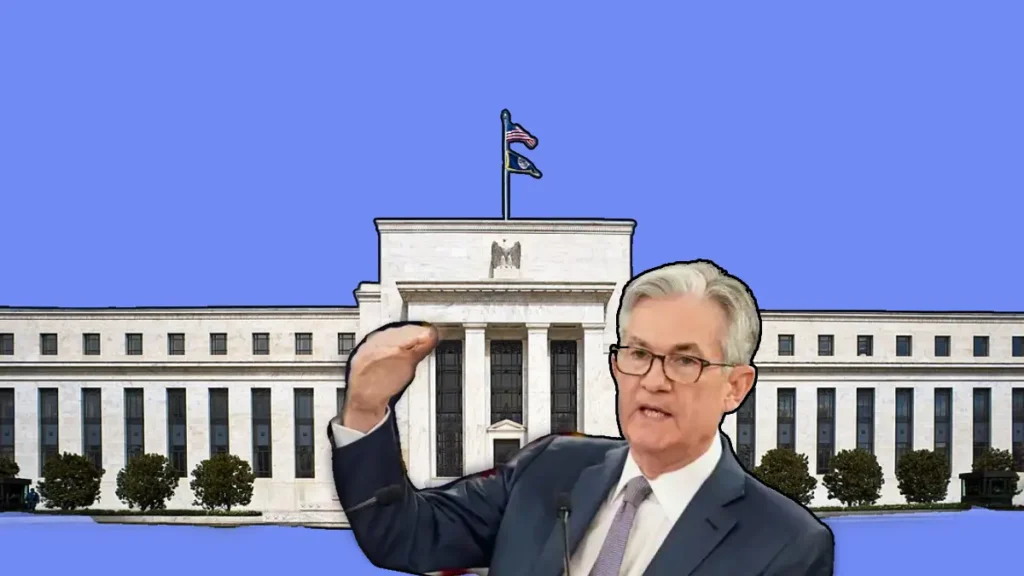The Federal Reserve is set to welcome new members to its interest rate-setting committee, FOMC 2024. Analysts hold diverse opinions on whether this will alter the balance of power between hawks and doves, influencing the course of monetary policy.
As the dynamics unfold, the outcome remains uncertain, prompting close scrutiny in financial circles.
The shift occurs due to the way the central bank allocates votes within its Federal Open Market Committee. This committee holds the ultimate authority in deciding whether interest rates should rise or fall.
Annually, as part of a power-sharing arrangement with quasi-public regional Fed banks across the nation, four of the 12 seats undergo a transition.
In the current year, these positions are assumed by regional Fed presidents from Cleveland, Richmond, Atlanta, and San Francisco—namely, Loretta Mester, Tom Barkin, Raphael Bostic, and Mary Daly.
Leaving the committee are Austan Goolsbee, Patrick Harker, Neel Kashkari, and Lorie Logan—the regional Fed presidents from Chicago, Philadelphia, Minneapolis, and Dallas who held voting positions in 2023.
Impact on Anticipated Rate Cuts Amid Addition of New Members in the FOMC 2024
The decisions of the newly formed FOMC 2024 will face close examination, with Wall Street anticipating six rate cuts starting in March.
In contrast, during 2023, the FOMC increased rates to a 22-year high and maintained stability in the latter part of the year. Fed officials project a median of three cuts for 2024.
Most of the FOMC remains unchanged from 2023, as it comprises eight permanent seats held by the president of the Federal Reserve Bank of New York (currently John Williams) and seven Fed governors in Washington, nominated by the president.
However, the addition of four new members might slightly tilt the FOMC towards a more dovish stance, as suggested by Ernst & Young chief economist Gregory Daco.
This term, using Fed jargon, indicates a tendency for members to be more open to cutting rates as a means of stimulating the economy.
New Members of FOMC 2024 Have Divergent Views
According to Gregory Daco, Bostic and Daly align with the dovish description, signaling a preference for rate cuts, whereas Barkin tends to adopt a more neutral stance.
Bostic has forecasted rate cuts in the latter part of 2024, and Daly has publicly acknowledged the need to initiate discussions about rate cuts—an openness not widely expressed by her fellow colleagues.
Barkin has emphasized his preference for confidence in inflation decreasing to the Fed’s 2% target before contemplating rate cuts.
Daco views Mester, one of the new members, as more of a hawk, a term in Fed jargon indicating a tendency to favor higher rates for inflation control. This perspective aligns with Mester’s recent comment cautioning that the markets had preemptively anticipated rate cuts, suggesting a more measured approach.
Yet, Mester’s stance might shift towards dovish in the latter part of the year, influenced by the Federal Reserve’s compulsory age and length-of-service policies.
Mester’s Exit and Goolsbee’s Dovish Influence on FOMC 2024 Votes
According to Fed rules, regional bank presidents appointed after turning 55 are mandated to serve a 10-year term, affecting Mester and leading to her departure in mid-2024.
Upon her departure, a pre-assigned alternate will cast votes in Mester’s place. In 2024, this responsibility falls to Goolsbee from the Chicago Fed, who exhibited a dovish stance in some of his public remarks last year.
He consistently expressed confidence in the Fed’s ability to curb inflation without triggering a recession, referring to it as the “golden path.”
Nevertheless, not all analysts concur that the inclusion of new members will sway the committee towards a dovish direction.
Andrew Patterson, Senior International Economist for Vanguard, anticipates that the inclusion of Daly and Mester, coupled with the departure of Harker and Goolsbee, will probably result in a committee leaning more towards a hawkish stance than dovish.
According to Patterson, this shift towards a more hawkish stance is viewed positively, as it could assist the committee in avoiding premature rate cuts.
However, Matthew Luzzetti, Chief US Economist for Deutsche Bank Securities, presents a different perspective, suggesting that the turnover in Fed voters will likely balance out, resulting in a similar count on the hawks vs. doves question.
Luzzetti raises a question about whether the committee can sustain the same cohesion it demonstrated when it was in the process of raising rates.
‘A Topic of Discussion’ for Future Policy
In their final policy meeting of 2023, Fed officials reached a consensus that rates had likely reached their peak.
Minutes from the December 13 meeting, disclosed by the central bank, reveal that nearly all officials foresaw lower rates as “appropriate by the end of 2024.”
However, the discussion didn’t delve into the precise timing of these potential cuts, and participants retained the option of raising rates if inflation were to show signs of heating up once more.
Following the last meeting, in a press conference, Fed Chair Jerome Powell emphasized that central bank officials had initiated discussions about when to ease policy constraints.
Powell referred to it as a “topic of discussion” during the December meeting and highlighted its significance as “a topic for us looking ahead.”
Powell’s comments sparked a market rally, with optimism for a return to rate cuts.
However, in the days that followed, several Fed officials attempted to temper expectations, creating uncertainty about the likelihood and pace of any potential cuts.
